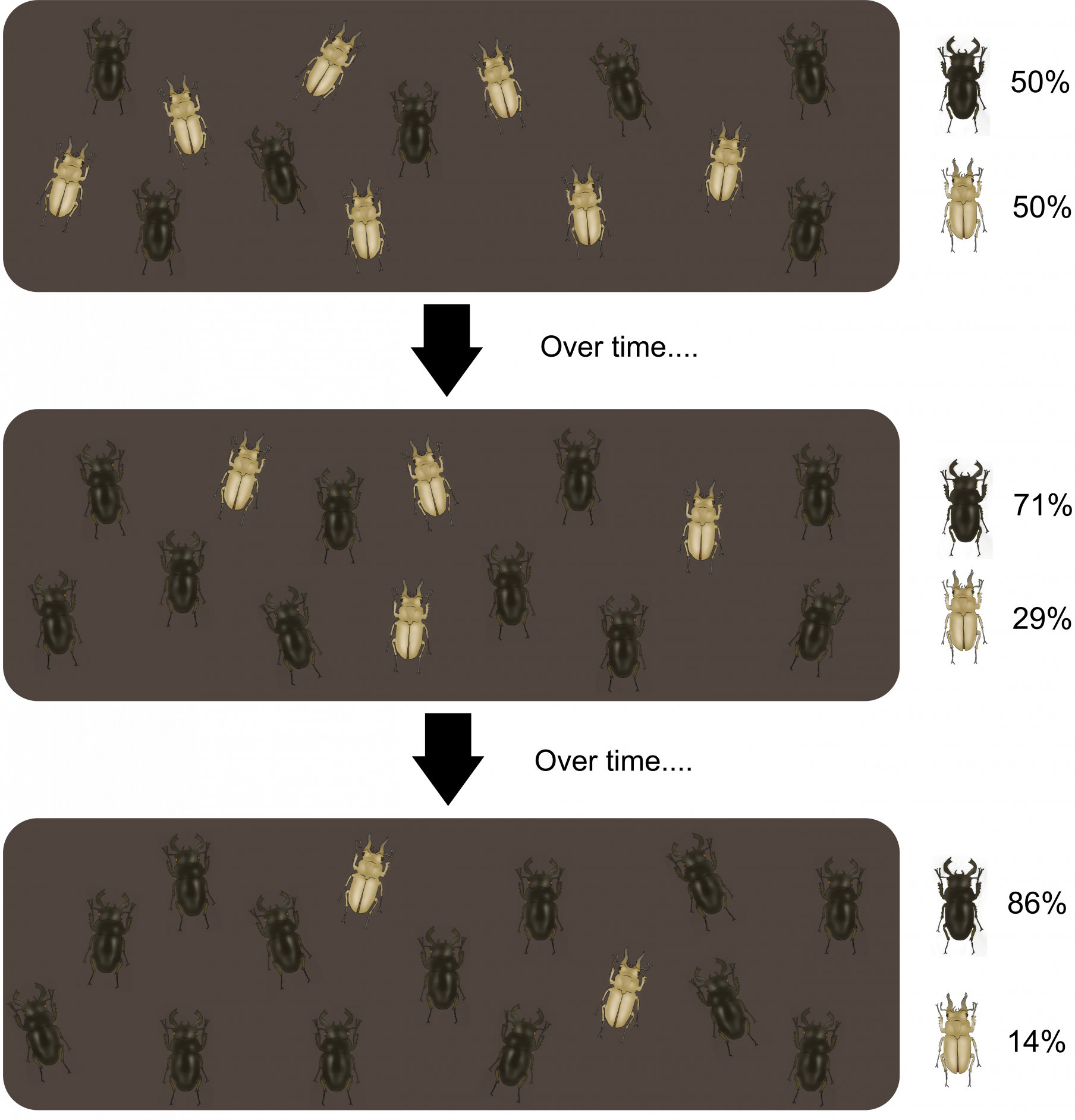2.10 Mechanisms of Evolution: Natural Selection
What is natural selection?
Take a look at the pictures below. Why is the mantis shrimp so colorful? Why does the stick insect look so stick-like? These incredible traits are products of natural selection.

Natural selection produces changes in trait frequencies within populations (that is, evolution). Specifically, natural selection increases the frequency of beneficial (adaptive) gene variants. Natural selection is an extremely powerful force that has created the amazing traits we see today, from the brilliant rainbow coloration of a mantis shrimp to the incredible camouflage abilities of a stick insect.

The three requirements of natural selection
For natural selection to occur, there are three requirements:
1) Variation. Multiple variants of genes must be present in a population for natural selection to produce any changes. Figure 2.13 shows a population of beetles that vary in their color. In order for the population to evolve, the population must contain individuals with different colors. In the top panel, 7 beetles are light-colored and 7 beetles are dark-colored.
2) Heritability. For a trait to be subject to natural selection, it must be heritable. By heritable, we mean that the trait must be passed down from parents to their offspring through their DNA sequences. In the beetle example, light-colored beetles produce light-colored offspring, and dark-colored beetles produce dark-colored offspring.
3) Differential reproductive success. An organisms’ ability to produce a relatively high number of offspring is its reproductive success. In order to evolve via natural selection, an organism’s reproductive success must be directly affected by its traits. The number of offspring an individual produces in their lifetime is how scientists measure reproductive success. The more offspring, the higher the reproductive success. Some individuals will have no offspring, some a few, and some many. This is what we mean by differential reproductive success, also called fitness. In our beetle population, the beetles live on trees with dark-colored bark. Predators like birds can detect and kill light-colored beetles more easily than dark-colored beetles. This means that dark-colored beetles survive longer and therefore produce more offspring. Dark-colored beetles therefore have higher reproductive success than beetles with light coloration. We would say, “Dark-colored beetles are more fit.”
Check Yourself
There are four mechanisms of evolution. One of those mechanisms of evolution, natural selection, has three requirements. It’s easy to get the four mechanisms of evolution and the three requirements of natural selection mixed up. We recommend practicing keeping these concepts straight. Try sorting these terms into mechanisms of evolution and requirements of natural selection.
All three of these requirements must be present for a trait to change in frequency because of natural selection. If any is missing, the population cannot evolve through the mechanism of natural selection.
Natural selection tends to decrease genetic variation because the gene variants that produce low fitness are lost from populations. However, there are circumstances when multiple gene variants lead to high fitness and natural selection causes all to be maintained.
Check Yourself
Content on this page was originally published in The Evolution and Biology of Sex by Sehoya Cotner & Deena Wassenberg and has been expanded and updated by Katherine Furniss & Sarah Hammarlund in compliance with the original CC-BY-NC 4.0 license.
- Image from Flickr by Charlene McBride, CC BY 2.0 license. ↵
- Image from Wikimedia Commons by Gilles San Martin, CC BY-SA 2.0 license. ↵

